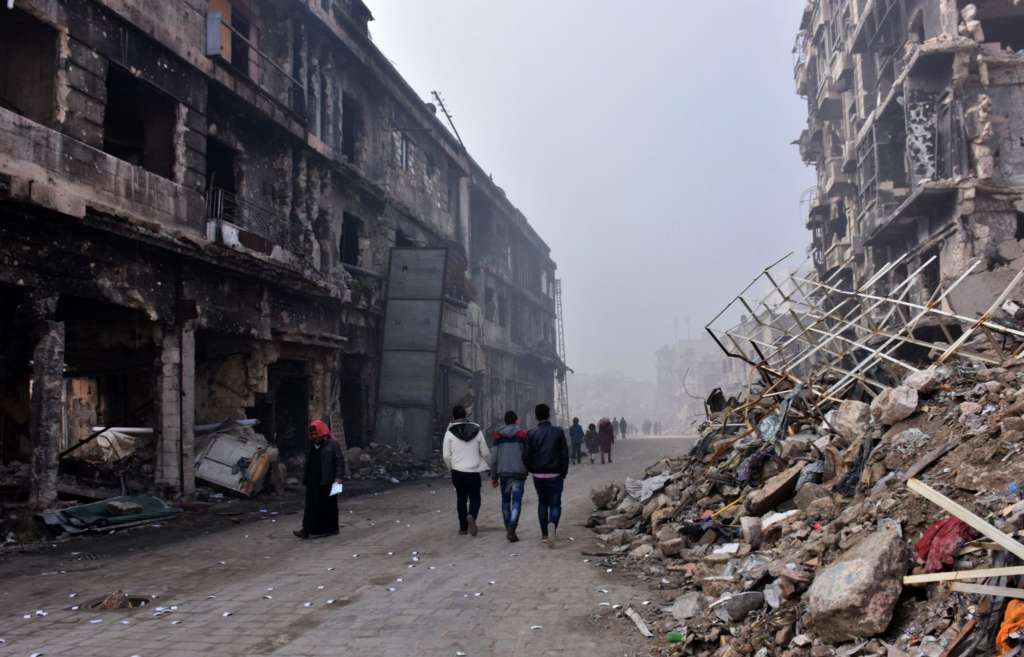Washington – The commander of the US-led coalition forces in Iraq and Syria expressed doubt on Wednesday that Washington could possibly increase the number of troops deployed in the two countries to combat ISIS militants, as Russian warplanes bombed US-backed fighters in several small villages in northern Syria after mistaking them for jihadists.
“I don’t foresee us bringing in large numbers of coalition troops, mainly because what we’re doing is in fact working,” said Army Lieutenant General Stephen Townsend. “But in the event that we bring in any additional troops, we’ll work with our local partners both here in Iraq and Syria to make sure that they understand the reasons why we’re doing that and to get their buy-in of that.”
More broadly, the general said he is satisfied that the US counter-ISIS strategy as developed during the term of President Barak Obama is working. He said he has forwarded up his chain of command a set of recommendations on possible adaptions of the strategy, but he would not discuss those. He suggested that no major changes were needed and explicitly stated that sending large numbers of US troops, as President Donald Trump proposed during the presidential campaign, would not help.
Others have said the Trump administration might seek to accelerate the assault on Raqqa by putting additional US trainers and advisers into Syria and possibly sending small numbers of conventional forces to operate long-range artillery.
Townsend said US intelligence estimates put the number of ISIS jihadists in Iraq and Syria combined at 12,000 to 15,000. That is down from an estimate of 19,000 to 25,000 in February 2016 and 20,000 to 31,000 in 2014.
Meanwhile, Russian warplanes bombed US-backed fighters in several small villages in northern Syria after they mistakenly thought ISIS militants were in the area, Townsend announced.
He said Russian and Syrian regime aircraft attacked the villages to the south and east of Al-Bab in Aleppo province on Tuesday. He declined to say how many of the US-backed Syrian fighters were killed or wounded.
The Russians apparently had observed ISIS militants moving from the area and wrongly assumed that other forces remaining were jihadists.
“We had some Russian aircraft and regime aircraft bomb some villages that I believe they thought were held by ISIS, yet… actually on the ground were some of our Syrian Arab Coalition forces,” Townsend told reporters in a video call from Baghdad.
The SAC forms part of a broader alliance called the Syrian Democratic Forces (SDF) comprising Kurdish and other groups that the United States has been training and advising to lead the anti-ISIS fight.
“It became apparent that the strikes were falling on some of the Syrian coalition positions. Some quick calls were made to our de-confliction channels and the Russians acknowledged and stopped bombing there.” Townsend said.
Russia denied responsibility, saying in a written statement that it had adhered to US guidance on avoiding friendly forces in that area.
The Russian Ministry of Defense issued a statement contradicting Townsend’s version of the events. It said that in communications prior to the airstrike, a US officer had expressed concern about the possibility of US-backed Syrian fighters being struck inadvertently.
“To prevent any such incidents, a US representative gave precise coordinates of the US-backed opposition forces in that area to a Russian military officer,” the statement said. “The Russian military command took that information into account. Russian or Syrian aircraft haven’t dealt a single strike on the areas designated by the US.”
US troops operating less than five kilometers from the villages observed the bombing and communicated the error, which was then passed to the Russians through a “de-confliction” hotline the two powers have established to avoid mishaps.
About 500 US troops are in Syria, almost all of them special operations commandos. Their role is currently limited to advising local forces and staying behind front lines.
Russia is using air power to prop up the regime of Bashar al-Assad but also sometimes strikes ISIS. Turkey has moved into northern Syria and is battling IS while also trying to keep US-backed Kurdish forces in check. And America is trying to support the Kurds while not alienating ally Turkey.
“It’s a very complicated battlefield situation where essentially three armies and an enemy force have all converged within the same grid square. Everybody should keep their sights focused on ISIS… and not fighting deliberately or accidentally one another,” Townsend said.
Anti-ISIS operations in Syria will eventually center on Raqqa, the supposed capital of the “caliphate” that ISIS declared in 2014.
Given the political sensitivities, questions abound on the extent to which Kurdish forces would be involved in the offensive and whether they would enter the city. Townsend said he expects the Kurds to take part in the Raqqa offensive “in one form or fashion.”
“The facts are there are Kurds from Raqqa and larger Raqqa district and province. So there are Kurds from there, local Kurds who will participate.”
